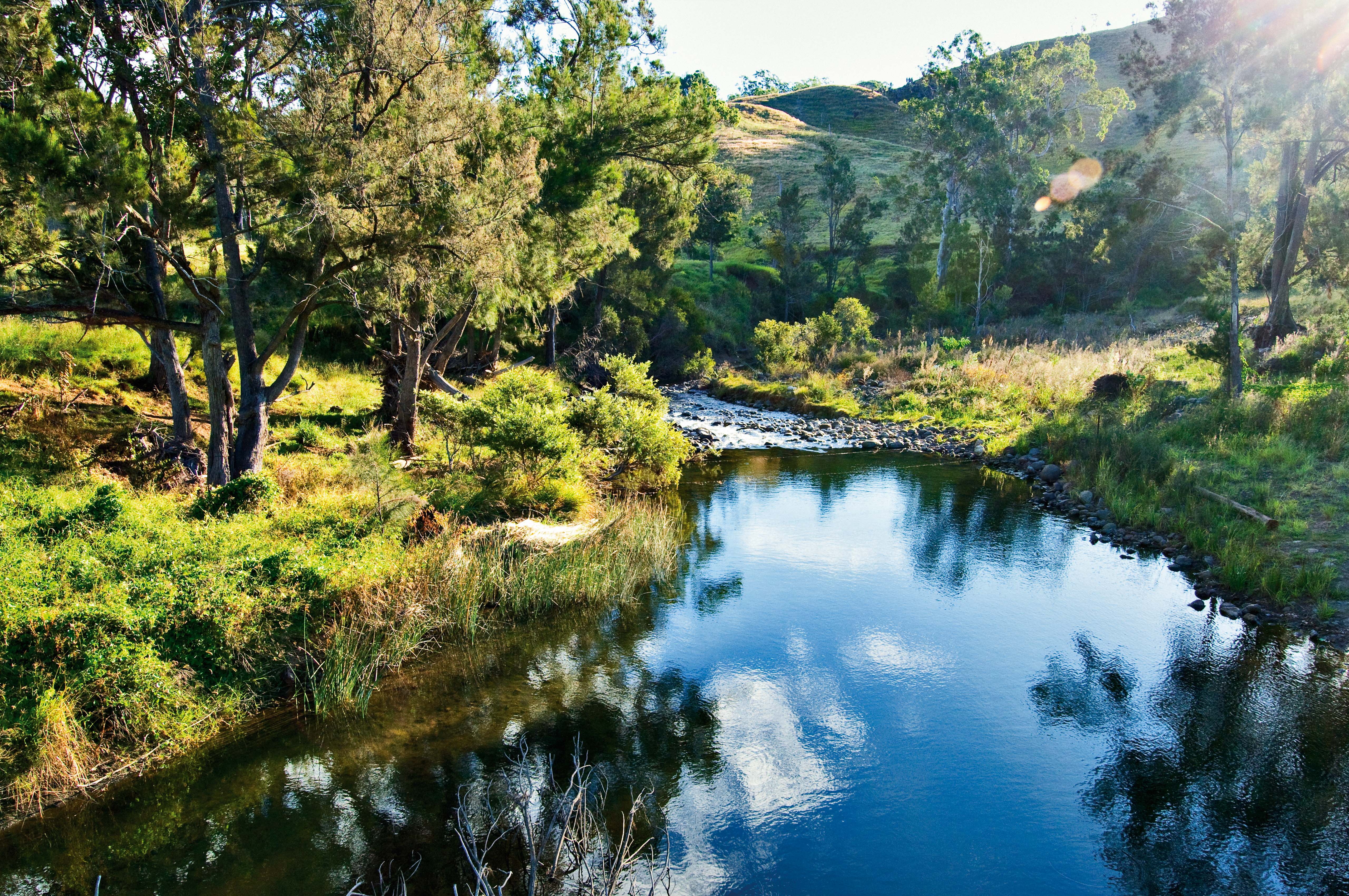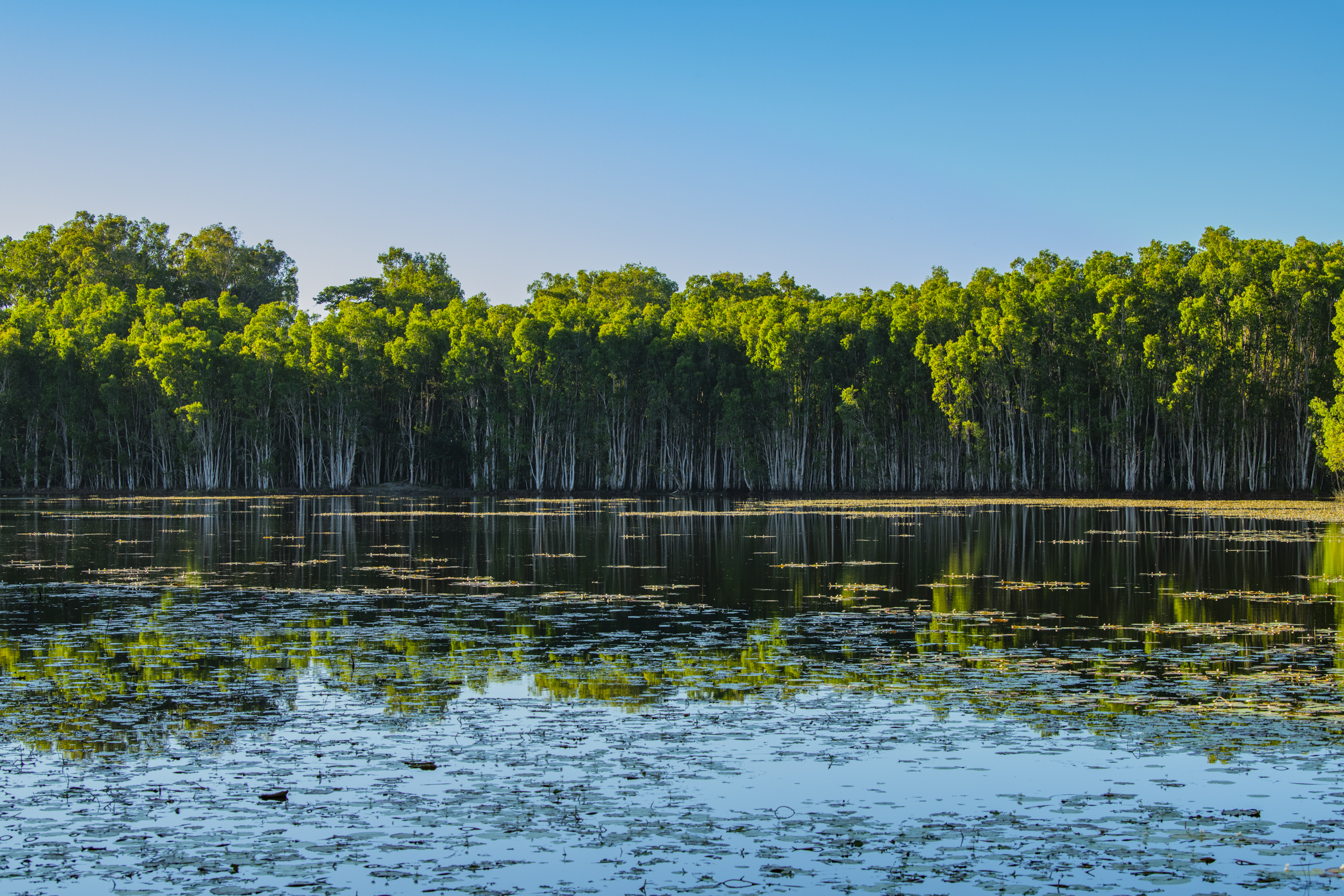|
|
Key principles for rehabilitationThe overarching goal for site management and rehabilitation is the wise and sustainable use of aquatic ecosystems (wetlands). The Aquatic Ecosystem Rehabilitation Process applies seven key principles to achieve this goal. 1. Create a clear strategy/planUndertaking a rehabilitation project, even a small one, can involve a lot of work. Planning the project properly will save time, money and frustration by reducing extra unnecessary and unexpected issues. It is important to outline the purpose of rehabilitation, and the services or values to be maintained or improved in a Aquatic Ecosystem Rehabilitation Plan. In addition:
2. Understand your system at multiple spatial and temporal scalesAquatic ecosystems can provide numerous ecosystem services that are valued by different beneficiaries They also actively respond to changes that occur both locally or further away at varying timescales. Understanding the form and processes of the site and its broader landscape (catchment) can improve outcomes. This includes knowing past activities, interventions and disturbances. The future impacts of climate change and the timing of implementation also need to be considered. 3. Consider if intervention is necessaryAny aquatic ecosystem rehabilitation project needs to consider the dynamic nature of these systems. For example, rivers naturally move across floodplains over time through the processes of erosion and deposition – therefore is intervention necessary? If it is deemed necessary, avoid only managing current issues. Instead, consider goals and objectives that relate to the medium to long term. Include consideration of the future impacts of climate change and future development on aquatic ecosystem dynamics. Also consider what management interventions would reduce the need for future interventions after future triggers such as floods and cyclones. 4. Involve First Nations people and other stakeholdersAll aquatic ecosystem rehabilitation management planning should consider impacts on a broad range of stakeholders (including beneficiaries). Identify and involve stakeholders from an early stage in the process. Take time to understand their different perspectives and possible competing values. Consider that not all community members benefit from the services or values and some people might be negatively impacted by the rehabilitation activities. First Nations people have a deep relationship with, connection to, and responsibility for aquatic ecosystems. This is part of their identity and therefore the cultural, physical and spiritual health of First Nations people is intimately connected to the health and wellbeing of these systems. First Nations people have been enduring custodians for tens of thousands of generations. Consideration and incorporation of traditional knowledge and values of First Nations people is fundamental to achieving sustainable aquatic ecosystem rehabilitation outcomes that respect both Country and people. In many places, it is considered necessary to not only involve the appropriate Traditional Owners, but to gain their prior and informed consent to work on their traditional lands. 5. Optimise rehabilitation outcomesIndividual aquatic ecosystems cannot provide all ecosystem services at all times. Optimising the key services required of the aquatic ecosystem should dictate the rehabilitation and management actions. Seeking complementary outcomes rather than focusing on a single service and checking for unintended consequences is important (e.g. the planting of some vegetation may encourage some birds but make the site unusable for others). Also remember that the maintenance of existing services and values is more cost effective than re-creating them when they have been lost. A cost-benefit analysis of rehabilitation activities should thus consider any local development works that are planned. Is it cost effective to invest in rehabilitation, or are there other actions that can be undertaken to avoid causing further damage to local aquatic ecosystems? 6. ShareDocumenting what has been learned and sharing this information both internally and externally will support the adaptive management and continuity of the individual project and foster a learning environment that benefits the broader rehabilitation community. It is important to share both successes and learnings, so that lessons from rehabilitation projects can be applied in the future. It is important to wait for an appropriate period to measure outcomes as rehabilitation may be successful in the short term, but this may not be sustained. Alternatively, some actions may take years for the full benefits to be sustained. 7. Adaptive managementAquatic ecosystem rehabilitation should be undertaken in an adaptive management cycle where management is modified as conditions at the site change or new information becomes available ('learning by doing')[1]. Monitoring, evaluation, and sharing are critical elements of the adaptive management cycle. Monitoring is essential to inform whether objectives are being met, the trajectory of the system, and for establishing project timeframes. Evaluation is undertaken as the learning step of the adaptive management. Evaluation is the analysis of monitored data and the project targets and goals, leading to the production of options for future measures. At this evaluation stage, a key decision needs to be made on whether the interventions are working, or if other interventions are necessary - providing the option to adjust direction to improve progress towards project outcomes. The project can be evaluated, restarting an adaptive management loop, for several different reasons. Examples include:
These evaluation milestones are yet another opportunity for sharing. This is a time to report the success of the project to multiple stakeholders and the community. Explain using data and other visual tools, such as photographs, why the site looks the way it does and suggest the trajectory it may take. References
Last updated: 29 June 2022 This page should be cited as: Department of Environment, Science and Innovation, Queensland (2022) Key principles for rehabilitation, WetlandInfo website, accessed 8 May 2025. Available at: https://wetlandinfo.des.qld.gov.au/wetlands/management/rehabilitation/rehab-process/principles.html |

 — Department of the Environment, Tourism, Science and Innovation
— Department of the Environment, Tourism, Science and Innovation



